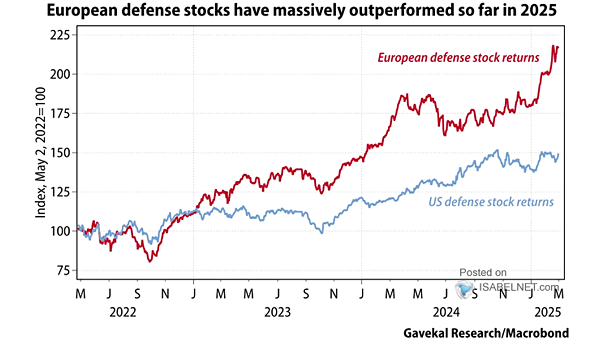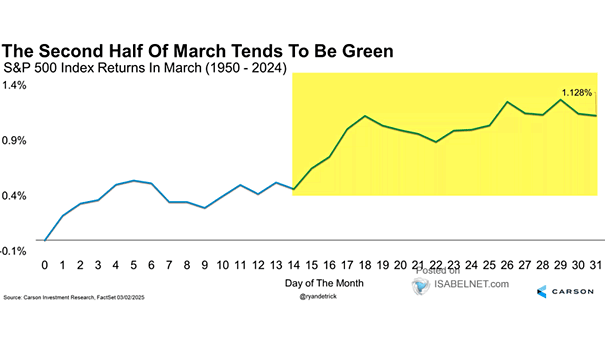European Defense Stock Returns vs. U.S. Defense Stock Returns
European Defense Stock Returns vs. U.S. Defense Stock Returns The trend of European defense stocks outperforming U.S. peers is likely to persist in the medium term due to sustained increases in military spending and geopolitical realignments favoring local suppliers. Image: Gavekal, Macrobond


